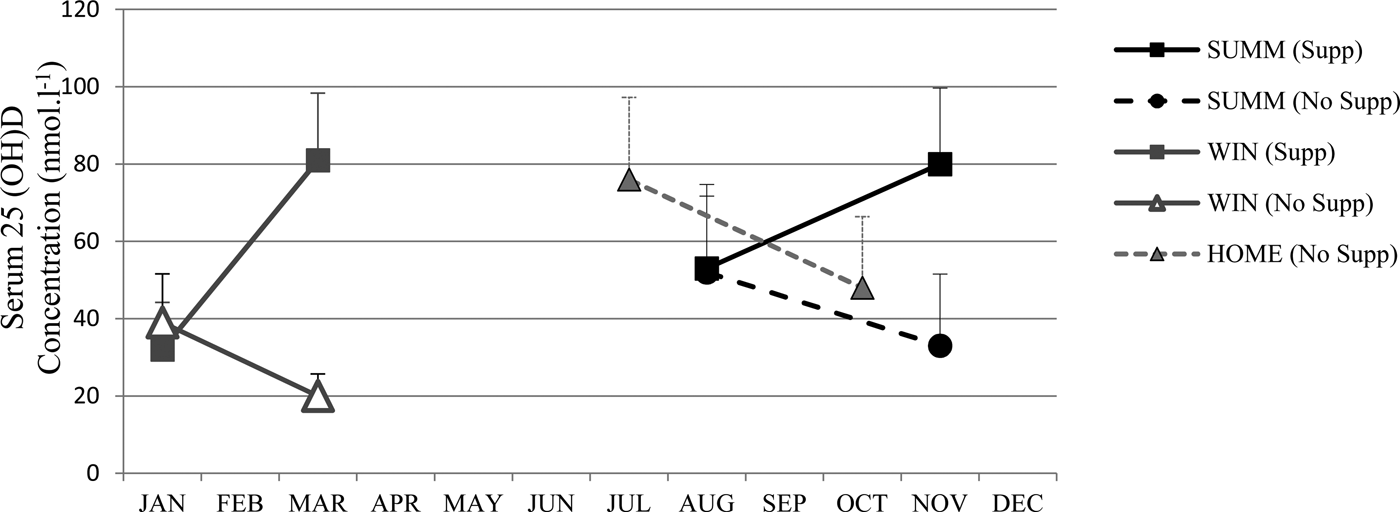Royal Navy (RN) submariners routinely undergo periods of up to 3 months in an enclosed environment completely devoid of natural sunlight. They may therefore be at risk of low or deficient levels of circulating vitamin D, and thus could benefit from supplementation. Information on the effects of prolonged submergence on vitamin D status and supplementation is limited. Furthermore comparison with existing literature is confounded by methodological differences.( Reference Gasier 1 , Reference Holy 2 ) This study investigated serum 25(OH)D concentration (as a marker of vitamin D status) in deployed and non-deployed RN submariners.
Two cohorts of male submariners deploying in winter (WIN; n = 32) and summer (SUMM; n = 64) for 12 weeks, and one cohort of male submariners who remained alongside for a similar duration (HOME; n = 34) volunteered for the study. Daily vitamin D supplements (2400 IU; ≡ 60 mg) were available via prescription for deployed cohorts only. Blood samples were drawn pre and post deployment and measurements of serum 25(OH)D were performed by liquid chromatography tandem mass spectrometry. The study was approved by the Ministry of Defence Research Ethics Committee and volunteers provided informed consent. Differences in serum 25(OH)D concentration were assessed by three-way mixed ANOVA (season, supplement use and time) and one-way ANOVA (pre-deployment concentration between groups).
Pre deployment serum 25 (OH)D concentration was lower for WIN compared to SUMM (38 ± 16 vs. 53 ± 20 nmol.l−1, P < 0·001). It was higher at post deployment in volunteers who had supplemented with vitamin D compared with those who had not (mean difference of 47 ± 4 nmol.l−1, P < 0·001) (Fig. 1).

Fig. 1. Serum 25(OH)D Concentration in Supplement Users (Supp) and Non Supplement Users (No Supp)
This study reports decreases in serum 25(OH)D in both deployed and non-deployed RN submariners without vitamin D supplementation, irrespective of season but notably below 25 nmol.l−1 in winter. Taking supplements is effective in preventing this decrease, but more research is required to determine the most practical and effective dose for this population given the likelihood of repeated deployment throughout the year.



